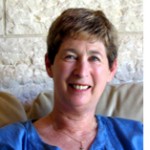By Dorothea Shefer-Vanson

JERUSALEM–Not long ago I was privileged to hear renowned architect Arthur Spector give a talk about the new Hadassah Hospital building at Ein Kerem designed by his firm. Leaving aside the financial aspect of the building, which has aroused some controversy, Spector proceeded to provide his audience with a fascinating insight into the inner workings of the architectural process.
Illustrating his talk with many slides, Spector described the process of planning and erecting the building, pointing out the many aspects involved in adhering to the ecological principles of sustainable construction. Putting up a ‘green’ building requires paying attention to a myriad of technical features, such as using renewable energy (wind, sun), minimizing carbon pollution, using materials efficiently, maintaining indoor air quality (no simple matter in a hospital) and minimizing the negative impact on the environment. In this instance the process involved consulting numerous experts in a wide variety of fields, which Spector has calculated as accounting for 1,300 meetings with 36 consultants. The role of the architect is to manage all the information without losing the soul of the design, as embodied in the slogan “architecture is the marriage of the art of the dream with the art of the real.”
The spacious, landscaped atrium provides a welcoming entrance to the hospital, forming a stark contrast with the constraining and unaesthetic entrance to the old building. In designing the individual inpatient rooms, which contain one or two beds only, the paramount concern was to provide privacy as well as comfort and easy access for medical procedures. As someone who has availed herself of the services of the new building I can attest to the achievement of this aim.
In the 1950s it was Israel’s first Prime Minister, David Ben-Gurion, who chose the Ein Kerem site for the Hadassah Hospital, seeking to combine Jerusalem’s healthy mountain air with sufficient distance from the border to ensure that Jordanian artillery fire did not reach the hospital. Today that military consideration is no longer relevant. The location of the hospital, on the outskirts of Jerusalem, has caused the city to develop westward and increased the Jewish population in that part of the city. The original inpatients building was built according to specifications that were not suited to Israel’s climate and conditions, with wards into which four or five beds were crowded, an impractical layout and an entrance that was unfriendly and narrow.
In planning a hospital special constraints have to be taken into consideration, and this is particularly difficult given the varied cultural and ethnic composition of Israel’s population. In addition to providing a welcoming entranceway, a hospital should combine functionality with flexibility, enable smooth connections between salient medical functions, provide possibilities of expansion, take the context and culture of the population into account and maintain the aesthetic values that all architects seek to uphold.
As well as functioning as a medical facility, Hadassah’s Ein Kerem hospital campus serves as a tourist attraction, drawing 200,000 visitors each year, many of them eager to see the stained-glass windows designed by Marc Chagall for the hospital’s synagogue. The new building will eventually provide over 500 beds, and the old building will be used as outpatients clinics. Healing gardens have been created on alternate floors of the new building, each one having one of the four elements – air, fire, earth water – as its theme. Future possibilities include bringing art works into the hospital, and even holding art exhibitions there.
In concluding, Arthur Spector noted that it is in hospitals that one sees all the disparate elements of Israel’s population – Jews, Arabs, Christians, Druze – side by side as they seek to get well or help a sick relative recover. It is our common human frailty that brings us all together, and it is there that one sees tangible evidence to support the belief that reconciliation between Palestinians and Jews is possible.
*
Dorothea Shefer-Vanson is a freelance writer, author, and translator based in the Jerusalem suburb of Mevasseret Zion. She may be contacted via dorothea.shefer@sdjewishworld.com
*
San Diego Jewish World seeks sponsorships to be placed, as this notice is, just below articles that appear on our site. This is an ideal opportunity for your corporate message or to personally remember a loved one’s contributions to our community. To inquire, call editor Donald H. Harrison at (619) 265-0808 or contact him via donald.harrison@sdjewishworld.com
Pingback: Oral Language Translator might cut down on miscommunication – Coolest Gadgets | Translation Service